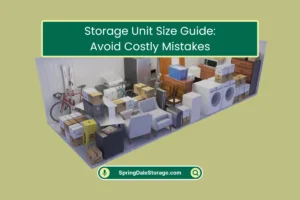Let’s talk real life for a second. Last summer, I destroyed a perfectly good mattress trying to “save money” on storage. Wrapped it in a $5 plastic painter’s drop cloth, tossed it in my buddy’s garage, and came back two months later to what looked like a biology lab experiment. That smell… I can still taste it.
After that disaster (and two more failed attempts), I finally cracked the code. Here’s the straight talk on mattress storage you won’t find in those generic online guides.
The Cleaning Process Nobody Does Right
You wouldn’t put dirty dishes away wet, so why store a dirty mattress? Here’s my battle-tested cleaning method:
- Vacuum like you’re getting paid per crumb – Get in those seams where all the skin flakes hide.
- Spot treatment cocktail – 1 part Dawn, 2 parts hydrogen peroxide, 4 parts water.
- Baking soda trick – Sprinkle, wait 12 hours (not the 1 hour BS everyone says), then vacuum.
- The secret weapon – Leave a box fan blowing on it for a full 24 hours.
Pro tip: If you’ve ever spilled anything liquid on your mattress, put down towels and stand on the spot for 5 minutes before cleaning. Pushes moisture back up to the surface.
Wrapping: Where Most People Screw Up
After ruining that first mattress, I became a wrapping fanatic. Here’s what actually works:
For under 3 months:
- Cotton mattress cover (the $25 kind from Target).
- Then wrap in moving blankets.
- Finally, a breathable plastic cover (NOT the $1.99 painters plastic).
Long-term storage:
- A professional bag to store your mattress (the kind with the zipper).
- Throw in 2-3 moisture absorbers (I like DampRid buckets).
- Wrap the whole thing in a quilt for good measure.
What never works:
- That “space saver” vacuum bag (ruined my second mattress).
- Just a sheet (mice ate through mine in 2 weeks).
- Plastic wrap without ventilation (hello, mold).
Location: The Make-or-Break Factor
I’ve tested every storage spot imaginable. Here’s the real ranking:
Actually Safe:
- Climate-controlled storage unit (this is where my good mattress lives now).
- Inside your house (if you’ve got the space).
- Finished basement (only if you run a dehumidifier).
Risky Business:
- Garage (only if it’s insulated and you check weekly). People often ask how to store a mattress in garage safely—the truth is, it’s risky. Without insulation or moisture control, you’re almost guaranteed mold, pests, or warping over time.
- Under the bed (if you’ve got at least 8″ clearance).
Mattress Damage Zones:
- Attics (120°F in summer = glue failure).
- Outside sheds (condensation city).
- Leaning against a wall uncovered (just don’t).
Positioning Hacks That Work
After my third failed attempt, I called a mattress manufacturer and got the real scoop:
- Best: Flat on wooden slats (not solid wood – needs airflow).
- Okay: On its side IF you rotate it every 30 days.
- Never: Folded (killed my third foam), bent, or with weight on top.
Genius trick: If storing upright, slide a piece of cardboard between the mattress and wall to prevent moisture transfer.
When to Call in the Pros
Here’s when I finally broke down and got proper storage:
- When my $1,800 mattress started smelling like a locker room.
- When I found mouse droppings in the box spring.
- When I realized I was spending more fixing mistakes than storage would cost.
We’ve got specialized mattress storage units that maintain a perfect 55-75°F with 50% humidity year-round. Sometimes the “cheap” way ends up costing more.
The Hard-Earned Checklist
- Clean like you’re prepping for surgery.
- Wrap like you’re protecting the Hope Diamond.
- Storing like you’re preserving fine wine.
- Check on it monthly (set phone reminders).
Now, avoid mistakes. Follow this and you might actually get to use that mattress again. Unlike my first three attempts. Learn from my mistakes – your back (and wallet) will thank you.













0 Comments